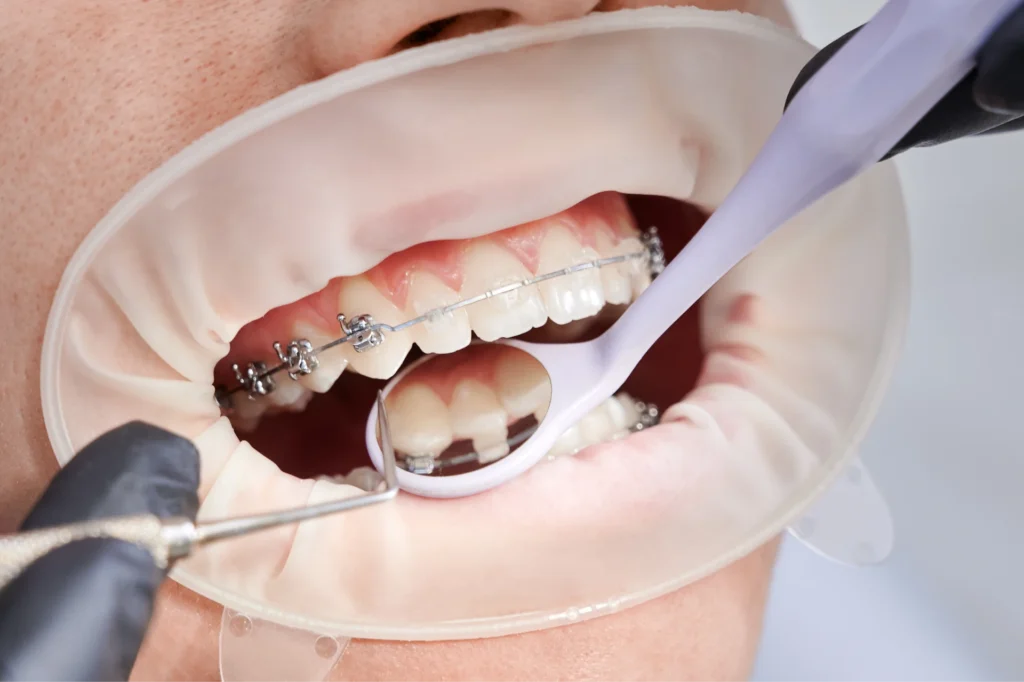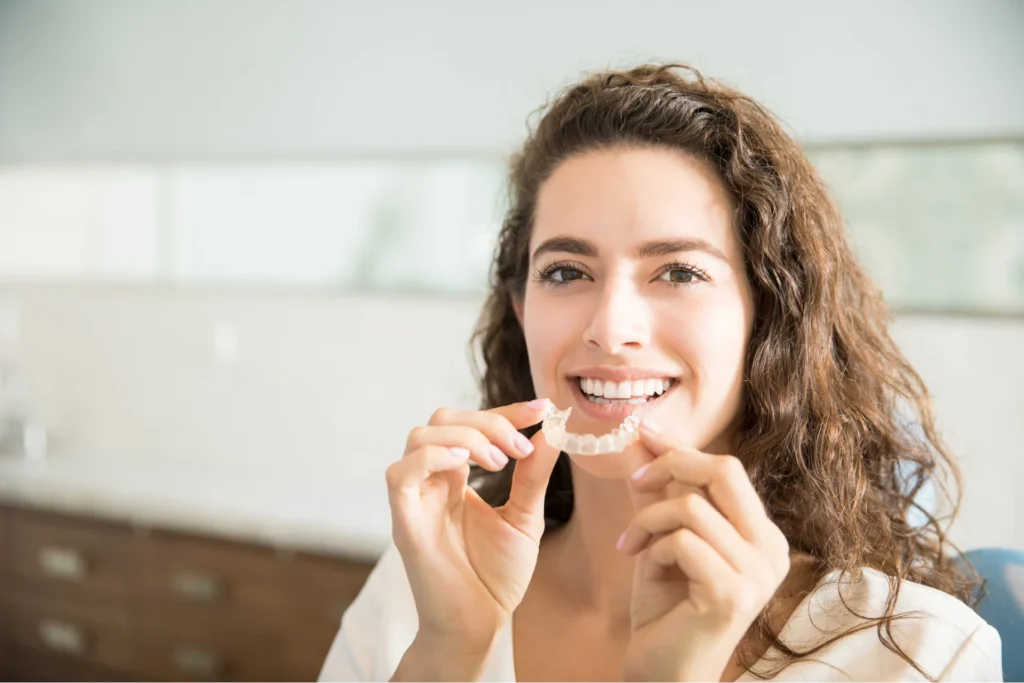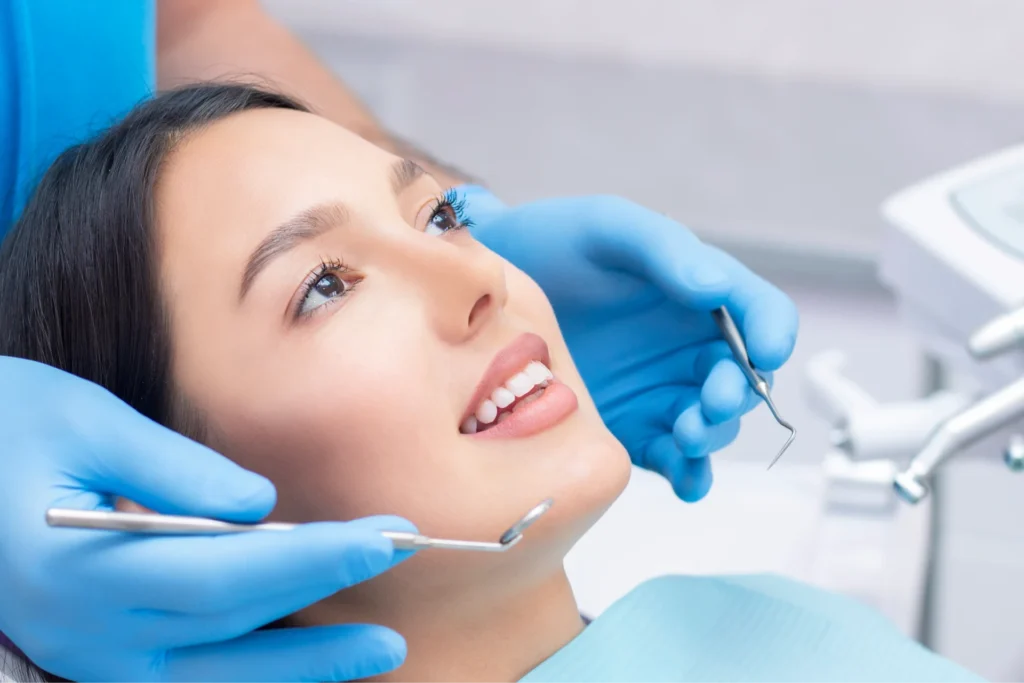Orthodontic Treatments: A Guide to Straightening Your Smile
What is Orthodontic Dentistry?
Orthodontic treatments are crucial in enhancing oral health and achieving a beautiful smile. With advancements in orthodontic technology, individuals of all ages can benefit from treatments to correct misaligned teeth and bite issues.
Understanding Orthodontic Treatments
Orthodontic treatments are all about making your teeth look and feel great! Whether fixing crooked teeth or ensuring your bite is just right, orthodontic treatment can help. It’s not just about looks, though – having straight teeth can make keeping them clean and healthy easier.
Early orthodontic treatment can start even when you still have permanent teeth and continue into adulthood. From braces to clear aligners, there are lots of options to choose from. Your orthodontist might even recommend surgery if needed to fix jaw problems.
No matter your treatment, it’s all about improving your smile and confidence. So, if you’re considering orthodontic treatment, don’t worry – your orthodontist is there to help you every step!
Common Orthodontic Issues
Common orthodontic issues can affect anyone, from children to adults. These issues include problems with the alignment of the upper and lower teeth and the upper and lower jaw.
Crooked or misaligned teeth can make it difficult to chew properly and may impact your confidence in your smile. Wisdom teeth, the last set of molars to come in, can sometimes cause overcrowding and need removal.
The upper jaw may need adjustment for crowded teeth. Crowded upper teeth can lead to oral health issues if not addressed promptly.
Orthodontic treatment aims to straighten teeth and correct bite problems, improving oral health and preventing future issues. In some cases, orthognathic surgery may be recommended to address severe jaw misalignment.

Orthodontic Treatment for Oral Health
Whether it's fixing back teeth, protecting teeth from wear, or creating extra space in the mouth, orthodontic work offers various treatment options tailored to each individual's needs. Orthodontic treatment includes:
Traditional braces: Metal braces are a time-tested orthodontic solution for straightening teeth and correcting bite issues.
Clear Aligners: Clear plastic aligners offer a discreet alternative to traditional braces, allowing for effective tooth movement with minimal visibility.
Orthodontic Devices: Palate expanders, headgear, and retainers are among the orthodontic devices used to address specific dental issues and aid in treatment.
Tooth decay can worsen without timely orthodontic consultation. Starting treatment early can lead to better health and self-confidence. Orthodontists who have received additional training in orthodontics beyond dental school are experts in diagnosing and treating these issues.
With the guidance of an orthodontist and the use of tools like retainers, patients can achieve a straighter smile and maintain their oral health for years to come.

Benefits of Orthodontic Treatment
The benefits of orthodontic treatment are numerous and extend beyond just aesthetics. Here are some key advantages:
Enhanced Aesthetics: Orthodontic treatments help create a confident, healthy smile that boosts self-esteem.
Better Speech Function: Correcting bite issues can improve speech clarity and pronunciation.
Long-Term Health: Treatment contributes to overall well-being by addressing dental issues that may impact wellness.
Orthodontic treatment offers cosmetic and functional benefits, helping patients achieve a straighter, healthier smile and enjoy improved oral health and overall quality of life.
Starting Orthodontic Treatment
Age is a factor considered in orthodontic treatment planning. Starting orthodontic treatment involves several steps to ensure the process is tailored to your needs and goals. Here’s a general outline of what to expect:
01
Initial Consultation: Schedule an appointment with an orthodontist for an initial consultation. During this appointment, the orthodontist will evaluate your dental and medical history, thoroughly examine your teeth and jaws, and discuss your concerns and treatment goals.
02
Diagnostic Evaluation: The orthodontist may take diagnostic records, including X-rays, photographs, and impressions or digital scans of your mouth. These records help the orthodontist develop a personalized treatment.
03
Treatment Initiation: Orthodontic treatment typically begins with the placement of braces or clear aligners to initiate tooth movement. Clear aligners may also be provided, depending on the treatment plan.
04
Follow-Up Appointments: Attend regular follow-up appointments with the orthodontist to monitor progress. These appointments ensure that treatment is progressing effectively and address any concerns that may arise.
05
Maintaining Oral Hygiene: Practice good oral hygiene by brushing and flossing regularly and following any specific instructions provided by the orthodontist.
06
Completion of Treatment: Once the orthodontist determines that treatment goals have been achieved, the braces or appliances will be removed. Retainers may be prescribed to maintain the results and prevent teeth from shifting.
By following these steps and working closely with your orthodontist, you can start orthodontic treatment and achieve a healthier, straighter smile.

Considerations for Orthodontic Treatment
When considering orthodontic treatment, several essential factors must be remembered to ensure the best outcome for your smile. Your orthodontist will evaluate your upper teeth, jaw, and lower teeth to determine the most suitable treatment plan.
Whether you're an adult or a child with adult teeth, protecting your teeth throughout treatment is essential. You may opt for fixed braces, metal braces, or clear braces.
Plaster models of your teeth may be used to plan your treatment effectively, considering any surrounding gum issues or impacted teeth.
It's also crucial to minimize habits like consuming fizzy drinks, which can lead to excessive wear on your teeth. Retainers are essential after therapy to maintain tooth alignment.
Depending on your specific needs, your orthodontist may recommend braces, headgear, palate expanders, or other appliances to create extra space or address minor problems.
It's essential to follow your orthodontist's instructions carefully and wear your appliances as directed to achieve the best results. Regular check-ups with your orthodontist and dentist will ensure your therapy progresses smoothly and your smile stays healthy for years.
The American Association of Orthodontists recommends regular check-ups during treatment. Regular dental check-ups and proper oral hygiene practices help improve oral health.
In Conclusion
Orthodontic treatments offer a transformative solution for achieving a straighter, healthier smile. By addressing common orthodontic issues and improving oral health, individuals can enjoy the benefits of a beautiful smile and enhanced overall well-being. With the guidance of an experienced orthodontist and commitment to treatment, achieving a confident smile is within reach for patients of all ages.